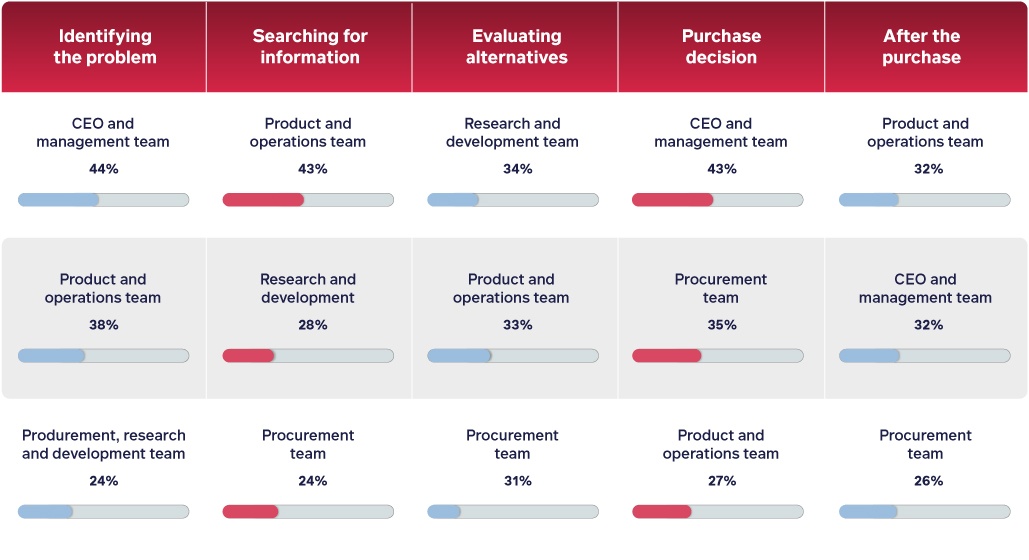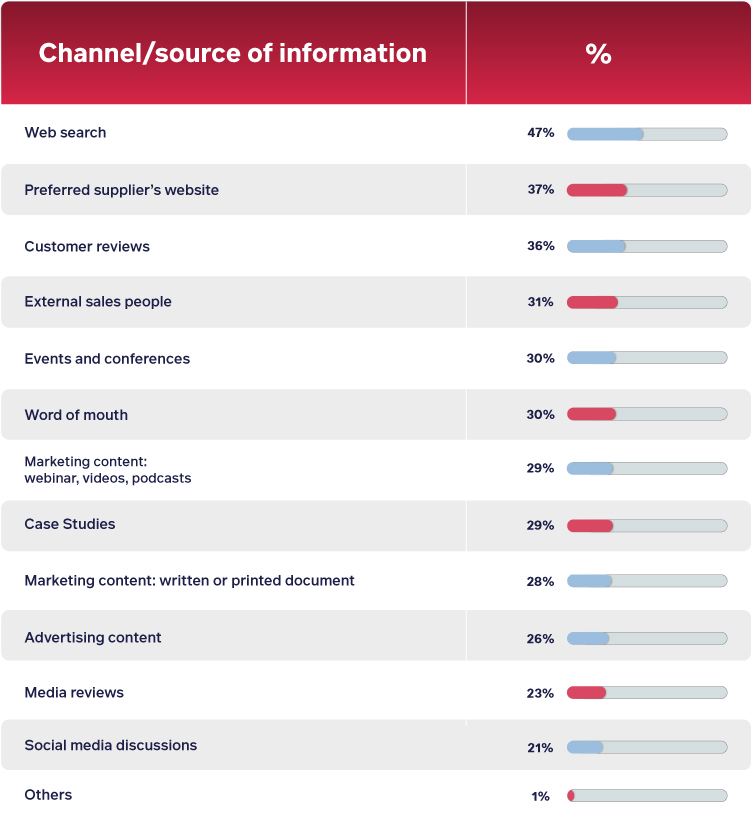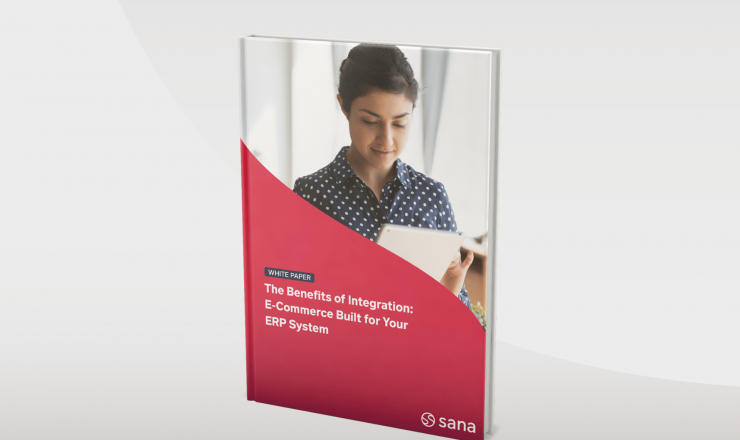

The last few years have changed the digital landscape drastically, not only in the B2C space but in B2B sales as well. So, what does the B2B buying process look like in 2023? And are you giving professional buyers the online experience they’re looking for?
According to Statista, B2B e-commerce sales aren’t going anywhere anytime soon: In 2023, an estimated 17 percent of B2B sales will be generated from online sources. This is up from just 13% in 2019.
Dive deeper into the B2B buying process — and how to improve yours — in 2023 and beyond.
What is the B2B buying process?
The B2B buying process is the journey a professional buyer takes when purchasing goods from another company. The B2B buying process starts with the buyer realizing they need something, and it ends when they pick what they want to buy from a company that sells it. Before they spend their company’s money, they need to think carefully about it, choose the best one for their needs and budget, and even get other team members involved in the decision.

See how your B2B buyer has changed in 2023
Get the B2B Buyer Report today.
What does the B2B buying process consist of?
The B2B buying process consists of 5 stages:
- Problem identification
- Information search
- Evaluation of alternatives
- Purchase decision
- Post-purchase decision
Our study shows that, on average, the entire process takes 28.2 days. Problem identification takes the least amount of time (4.5 days), while the evaluation of alternatives phase takes the longest (6.4 days).
We also discovered that professional buyers never make purchasing decisions on their own. The process usually involves different departments across the company.
Which buyer personas are involved at each stage? We looked into this as well. Below is a brief overview of the results:

How to be selected during phase 2 of the B2B buying process: Information search
Once the buyer has identified a problem (phase 1 of the B2B buying process), make sure that they can find you when they come looking for information and solutions.
These days, B2B buyers prefer to first look for information online. Our research shows that 62% want to access information online, while just 27% prefer accessing information offline. This brings us to our most important tip for phase 2: ensure that you can answer your customers’ questions online to satisfy their preferences.
Which channels and sources of information do buyers use when searching for information (phase 2 of the B2B buying process)? For online research, buyers mostly use search engines, such as Google (47%). A large percentage also use suppliers’ websites and customer reviews (37% and 36% respectively). Forrester research shows that 47% of buyers look at about 3-5 blogs or web pages on average before they contact a seller.

Stage 3 of the B2B buying process: Evaluation of alternatives
The evaluation of alternatives process takes the longest compared to the other stages: an average of 6.4 days according to our study. On average, about 3-5 suppliers are evaluated. So make sure you come out on top.
B2B buyers consider many factors when evaluating alternatives. However, below are their most important features:
- Price comparisons (33%)
- Payment terms (29%)
- Inventory availability (28%)
- Delivery terms (28%)
- Product demonstration (25%)
- Product feature comparison (24%)
But which features will convince B2B customers to choose you instead of your competitor? Over a third of the buyers we surveyed want features that offer the ability to track, place orders, manage returns and pay online. These are the top factors that convince B2B buyers when selecting a supplier.
Curious to see what your buyers are looking for? Read the 2024 B2B Buyer Report.
How to be selected during phase 4 of the B2B buying process: Purchase decision
CEOs and product teams, in particular, are involved in the purchase decision. During the purchase phase, you as a supplier will have a head start if you offer customers the following features:
- Good service (selected by 39% of buyers as the most important offering)
- Low price (selected by 37%)
- Favorable payment terms (selected by 31%)
- Product features (selected by 31%)
- Favorable delivery terms (selected 30%)
- Product availability and inventory levels (selected by 29%)
- Ability to pay online (selected by 26%)
How do you get selected during stage 5 of the B2B buying process: Post-purchase decision
Retaining your customers is important. Have they made a purchase? If so, continue to take good care of them. Also make sure you satisfy their wishes and preferences.
As should now be apparent, most B2B buyers want online access to information. How do you offer your customers this convenience? An online store with real-time information is the solution. This is how you can give customers a transparent overview of all important information, such as inventory levels, prices, and discounts.
Speed and convenience is the number 1 priority for your B2B customers when it comes to placing orders online. Over a quarter of respondents in our study want to be able to pay faster and be able to place repeat orders quicker. They also want speedy delivery and improved product tracking.
Top 3 online buying experience priorities for B2B customers in North America
- Easier and faster checkout (30%)
- Easy repeat ordering (29%)
- Quicker delivery and improved tracking (28%)
Top 3 online buying experience priorities for B2B customers in the U.K. and Ireland
- Quicker delivery and improved tracking (29%)
- Easy repeat ordering (28%)
- Greater choice of suppliers (26%)
Looking for inspiration to make the customer search process as convenient as possible? Check out examples 1 and 7 in our blog on best 8 examples of B2B e-commerce. Plus, learn about the impact of order errors and how to prevent them.
How to be selected in the B2B buying process: Key takeaways
We can conclude that a B2B web store, where customers can easily place orders, is the minimum requirement to outdo competitors. But when it comes to landing customers during the B2B buying process, this is only the start. Do you truly want to stand out to your B2B customers? Make sure you offer them at least the following:
- Good basics for your online store to ensure customers can quickly and easily find, order and pay for products
- Features that make it easier for customers to place orders, such as fast delivery, convenient payment options, and easy order tracking
- Content that matches the pain points of your various buyer personas

What do your B2B customers want?
Get the full stats and insights in our latest free report.



